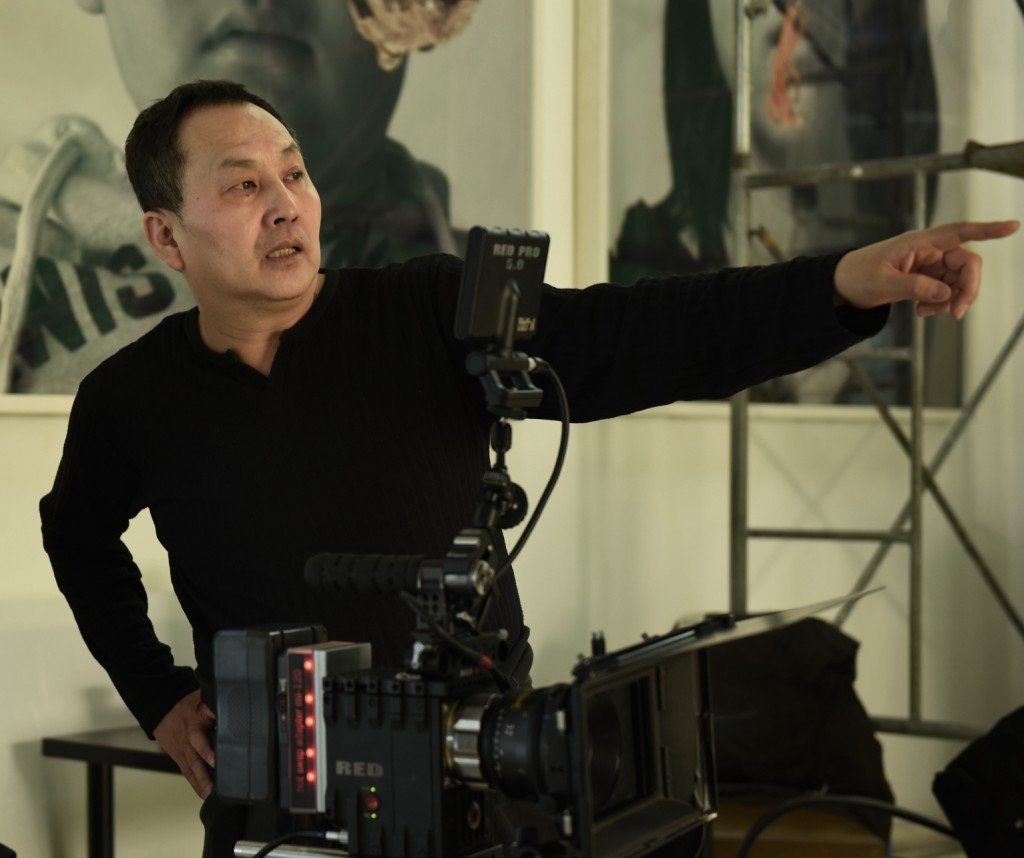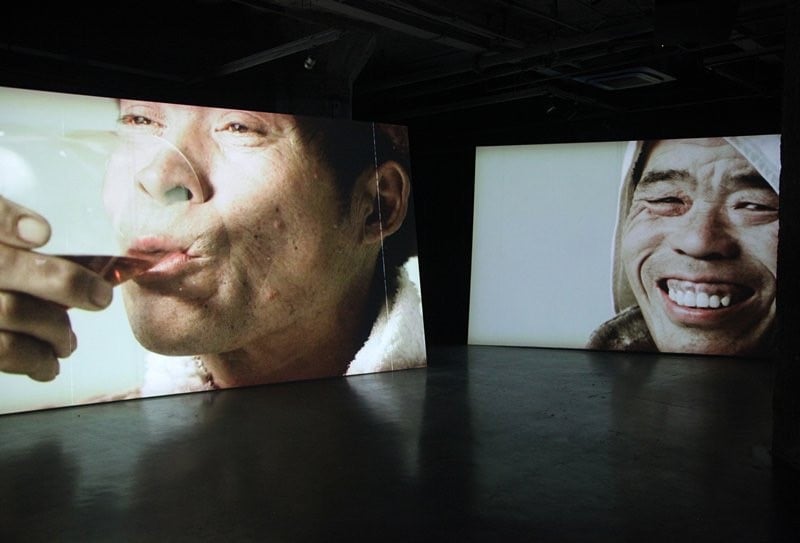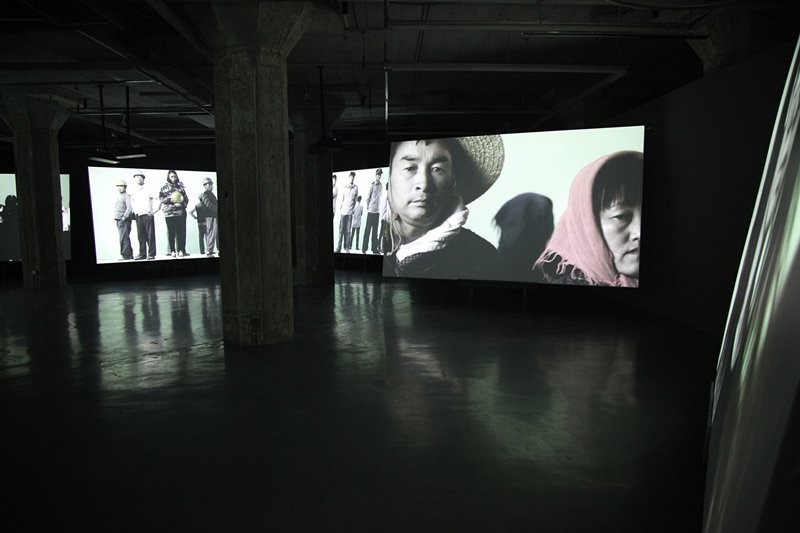Art & Exhibitions
artnet Asks: Video Artist and Painter Wang Gongxin
The video-artist on his ambitions, frustrations, and being forgotten.

Photo: Courtesy of Wang Gongxin Studio.
The video-artist on his ambitions, frustrations, and being forgotten.

Artnet News

Wang Gongxin welcomes his first museum retrospective “Present. Being” in China at OCAT Shanghai, which presents the video works of Gongxin over 20 years. A video artist and painter by training, Gongxin curated the exhibition in a unique way, eschewing the traditional curator-artist dynamic. He was given full reign to create the ecosystem of the show. Three new works, featured in the exhibition and completed in 2014, take a great leap from his celebrated The Sky of Brooklyn (1995)—a piece that was lauded by CNN as one of “10 artworks that will change the way you see China.” He considers the shift a “purge” in his artistic career.
Can you summarize your experience in the past 20 years?
Actually, the exhibition allows me to look back on my past 20 years as a video artist. My stories are very different from those who had been through 1985 and 1989 in the Chinese contemporary art scene.
Do you think you were lucky?
Yes, I was very lucky. I was young as a graduate and then a faculty member, and I had this opportunity to study in the States. Those years I spent in the US was suffering. The world unfolded before me when arrived in the US. There weren’t a lot of choices, but many more burdens. When the burdens became your experience, you were relatively famous. If you plan to reset your life, you have to start with minus instead of zero. The past has to be purged and erased, and then you are able to set it up again.
To purge is a battle?
It is a battle because you attempt to negate yourself. You need to find something more interesting first before negating yourself. In order to enter into something more interesting, you will need to forget the glamorous past. It requires so much courage. The more fame you had, the harder to negate yourself. It’s like a crucifixion. Many artists remain the same because changing is too hard. I am one of them, too afraid to fail and to lose the fame. (See Who Are the Top 10 Most Expensive Living Chinese Artists at Auction.)
Is it a kind of purge that you present the three new works in the retrospective of your 20-year career as a video artist?
The purge only applies to my personal experience, and it’s impossible to know if it’s completed. The three works provide an answer, and the answer itself is a question in a way. For a video artist, what is the real state of mind in your memory about form? From the perspective of a painter—how I started as an artist, how much traces of images are there left in my mind, besides the stories of emotion or words? That’s what I want to discuss in the show. How much you have changed? How much you have thought through? It’s like the act of deleting with a computer, was it truly deleted? I think that’s where the problem lies. When deleting does not delete everything, the thing remains.

Wang Gongxin, Bloodstained Auction (2014).
Photo: Courtesy of Wang Gongxin Studio.
The three images that your three video works refer to, are the traces you cannot get rid of?
Yes, and to be purged too. They are things I wish to forget when I determined to reset and enter new form of art. After 20 years, they are still there. Their impacts even get stronger, becoming the state of mind when observing the reality.
Are you frustrated?
I don’t know. I just post a question, and people can judge. I have it, do you have it? Do you understand what I want to say? It’s only a style if that’s something merely for me, and the art I’m making means nothing to the world, right? The work is too small when one person or two understands what I’m trying to say. What makes a good work or a good artist? When a work has universal values and provides shared experiences. The people would start to connect. (See World Art Market Passes €51 Billion Says 2015 TEFAF Report.)
Are you still eager to show your ability to create?
Except for being well fed and entertained, the biggest satisfaction of an artist comes from creation. People have the power of creation in order to offer something to the world. That’s the meaning of life, which has nothing to do with ambition.

Wang Gongxin, Whose Studio (2014).
Photo: Courtesy of Wang Gongxin Studio.
Are you afraid of being forgotten?
People have desires. I don’t want to deny them. You are pursuing the value of being, so you don’t want to be forgotten by people, right? I’m positive. Your value of being is proved by the society, at least by friends, right? If you are not creating something for people, the value of being will decrease, right? So you would say, OK, I can feel the value of being (by creating).
Do you enjoy the process of creation?
Yes, of course. The process of creation is what I enjoy the most. Actually once the show is about to open, and works are exhibited, I have a mixed feeling. I’m happy to see people coming for the show, very happy. But when the show closes, I feel so unconnected to the works. The moment I enjoy most is the struggles before the birth of the work. When you are about to create, you see the formation of the work; yet it stuck there for a long time; you cannot find the exact point of breakthrough to produce it. When you are down and frustrated, the aha moment comes all of a sudden! Yes, that’s it!
And that’s your high?
That’s the moment you can’t wait for when you start creation. When you feel something was wrong about a work, or when you know that’s exactly what you want when finish it. The excitement is like drugs.